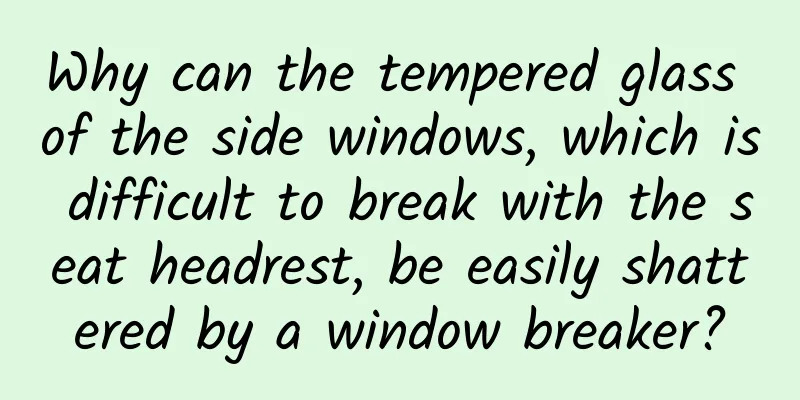How to make tea taste good? Master these 4 tips and become a tea brewing expert in seconds!

|
As people pay more attention to health, drinking tea is becoming more and more popular. The improvement of living standards has also enabled many people to pursue better tea. However, many people have this confusion: it is obviously a "very good" tea, but why is it so-so when it is brewed? Here, let’s talk in depth about the matter of “making tea”. Tuchong Creative 01 The essence of brewing tea In the process of making tea, there is a process called rolling, which is to use mechanical force to act on the tea leaves, press and rub them, so that the flavor substances in the leaves - such as the substances that bring bitterness, astringency, freshness, sweetness and fragrance - tea polyphenols, theanine, caffeine, pectin and tea polysaccharides, are partly brought to the surface of the leaves, and partly retained in the leaves. In this way, when brewing tea, the soluble substances on the surface of the leaves are first dissolved in the water, and then the substances inside the leaves move to the surface of the leaves, and then dissolve in the water, forming a tea soup with a certain viscosity and rich taste. In other words, brewing tea is actually a process of dissolving substances, with water as the solvent and soluble flavor substances as the solute. The amount of solute dissolved determines the concentration of the tea soup; the speed of dissolution affects the brewing resistance of the tea; whether the various substances are dissolved harmoniously affects the palatability of the tea soup. The amount, speed and balance of flavor substances dissolved in water are affected by many factors, such as the age of the tea leaves, whether the tea leaves are intact or broken, whether they are tightly rolled or loose, and the total amount of water extract. Of course, it is also affected by factors such as water temperature, the amount of tea leaves, the soaking time, and even the shape of the tea brewing container. The situation is very complicated and it is difficult to sum it up in one sentence. In the past, most of the teas that ordinary people drank were of low quality. The raw materials were relatively mature or even rough and old. The leaves did not easily absorb water and sink. There were few soluble substances in the leaves and they were not easy to dissolve in water. Therefore, more tea leaves had to be added and brewed with freshly boiled water to bring out the flavor. In that era when materials were not abundant, high concentration of food meant good! Nowadays, tea-making technology continues to improve, tea varieties are also abundant, people's tea consumption awareness and consumption level have improved, and tea of all grades can be drunk. For many high-quality teas, simply adding more tea and boiling water to brew is not conducive to the expression of flavor, and the tea soup is strong but not well-coordinated. If you want to make every kind of tea taste good, you need to put in some effort. Chinese tea is rich in varieties, and the same variety may have several levels. It requires repeated brewing practice and comparison to summarize some regular methods. As the saying goes, practice makes perfect! If tea brewing is likened to a symphony orchestra, then the tea maker is the conductor, delicious tea is like beautiful music, and the process of tea brewing is the process of control. 02 How to make good tea First of all, we need to confirm what it means to brew a cup of tea "well". The three basic indicators of "well brewed" should be that the tea tastes good, the quality characteristics of the tea are expressed, and the good flavor can be maintained for a relatively long time. Tuchong Creative To brew a good tea, you must first understand the "three elements" of tea brewing - the amount of tea, the temperature of the water and the soaking time. People who are new to making tea often worry about how much tea to put in the pot. If you put too little tea, the tea soup will be bland and tasteless, while if you put too much, the tea soup will be bitter and affect the taste. Tea experts often use the term "tea-water ratio" to describe the amount of tea, which is the ratio of tea to water (actually refers to the volume of the tea set). When brewing tea with professional utensils and methods, the usual ratio of tea to water is between 1:15 and 1:25, which varies depending on the characteristics of the tea leaves. For general green tea, yellow tea, white tea, black tea and scented tea, you can choose a ratio of 1:25, that is, 1 gram of tea leaves with 25 ml of water. If the volume of the teapot or covered cup is 100 ml, put 4 grams of tea leaves, and the brewed tea soup will be moderate in strength. Oolong tea and black tea often pursue a strong taste, and a 1:15 tea-to-water ratio is often used. If you use the daily steeping method to make tea, the ratio of tea to water is usually between 1:50 and 1:100. However, for boiled tea, due to the continuous high temperature, less tea leaves should be used. A ratio of 1:150 to 1:200 is appropriate. Although the above data is accurate, it is also inconvenient. For example, sometimes we cannot know the volume of the teapot, so we have to use simple visual estimation to determine how much tea to put in. For teapots and teacups, the volume and height are proportional. For example, for teapots or cups with a volume of no more than 400 ml, for tea with a tight or nearly spherical shape, the amount of tea should be enough to cover the bottom of the container, with a thickness of about 0.5 cm; for loose tea, a thickness of 1-1.5 cm is more appropriate. Determine the amount of tea leaves, and the water temperature for brewing tea is also important. The terms commonly used to describe different water temperatures are: High temperature water refers to water at 90-100℃; medium temperature water refers to water at 90℃~80℃; low temperature water refers to water below 80℃. There is also room temperature water, ice water, etc. The general rule is that when the water temperature is high, the tea fragrance is obvious, the tea soup tastes strong and tends to be bitter; when the water temperature is low, the tea fragrance is not strong, the tea soup tastes soft but tends to be bland and watery. Most green teas are tender and have high caffeine content, so they tend to taste bitter when brewed. It is better to brew them with low-temperature water. Black tea, white tea, scented tea and dark tea taste good when brewed with medium-temperature water, but oolong tea, Pu'er raw tea and some old teas are best brewed with high-temperature water to fully display their unique flavors. People who are sensitive to bitterness and caffeine can try to brew tea with warm water or even ice water, which will lose some fragrance, but the tea soup is almost not bitter. Tuchong Creative In short, the water temperature for brewing tea is the same as the temperature for cooking. It can be adjusted according to the characteristics of the tea and the flavor we want. In winter, due to the low ambient temperature and the fast heat dissipation of the tea set, the water temperature can be slightly higher than usual. The temperature of the tea leaves just taken out of the refrigerator is relatively low. The water temperature for the first brew can be raised by one level, and the second brew can return to normal. If the tea leaves are relatively broken, or even mostly tea leaves, the water temperature for brewing tea can be lowered by one level to reduce the bitterness. Whether the tea is brewed well or not has a lot to do with the soaking time of each cup. In the scene of professional tea brewing, when the amount of tea and the water temperature are fixed values, the soaking time becomes a wrestling point among tea brewing masters, and the unit is accurate to seconds. The flavor of green tea, oolong tea and raw Pu'er tea is easily affected by the soaking time, so when practicing brewing these teas, you must first learn to count the seconds in your mind. Sometimes a difference of four or five seconds can make a big difference in the taste of the tea soup. White tea, black tea and dark tea are more tolerant of the soaking time. Soaking for 40 seconds or 60 seconds does not make a big difference. In short, professional tea brewing calculates the brewing time in "seconds". If you use the daily steeping method, the amount of tea leaves is small, so the steeping time will naturally be longer, measured in minutes. If you use high-temperature water, it is generally better to drink it in 3-5 minutes. If you use cold brewing, the steeping time will be calculated in hours, and the tea soup will be easier to drink between 1 hour and 4 hours. Finally, whether tea can withstand brewing, that is, how many times a certain amount of tea can be brewed, how many times or how many cups it can be made from, is actually related to the grade of tea, the amount of tea, the water temperature and the soaking time of each brew. Tea brewing experts can often brew a type of tea more times and still have the tea soup be harmonious and delicious. This is a level that requires long-term practice and constant comparison and thinking to achieve. 03 What is the best tea set for making tea? Making tea is a technical job, and the ultimate goal is to make the tea taste good with the help of appropriate utensils and methods. Drinking tea is also a daily routine, and you can make and drink tea in different life scenarios, with just a slight adjustment in the methodology. If you want to taste tea professionally and appreciate the beauty of tea from all aspects of color, aroma, taste and shape, you can use a purple clay teapot, a porcelain teapot or a porcelain tea-brewing covered bowl to brew tea. Purple clay teapots are heat-insulating and breathable, making it easier to balance the aroma and bring out the characteristics of the tea. Although porcelain covered bowls are difficult to hold and can easily get burned by beginners, the soaking time is easy to control and it is more convenient to open the lid and smell the aroma. Porcelain teapots are somewhere in between. Although the brewing performance is not as good as that of purple clay teapots, a teapot can be used to brew any tea, and maintenance does not require as much care as that of purple clay teapots, which is a huge advantage. Tuchong Creative If you make tea in the office, you can use a teacup with a filter core. Put the tea leaves in the filter core, and take them out with the filter core after soaking for one or two minutes. The tea soup will be kept at a palatable concentration, and will not become too concentrated and unpalatable because the tea leaves have been soaked in water for a long time. This is called "tea and water separation". There is no regularity in the busyness of the office. Sometimes you just make a cup of tea and go to handle official business. When you remember to drink tea, the tea is bitter and astringent and difficult to swallow. Therefore, when making tea in the office, it is advisable to use a teacup that can separate tea and water, without appearing too high-profile. In daily life, when there are many people, you can use a Sancai cup or a large-volume teapot to make tea. The Sancai cup refers to a covered bowl for drinking tea directly. Each person has a cup, and the water storage and drinking are up to personal preference. However, the Sancai cup is not suitable for brewing white tea or oolong tea with large or stretched leaves. It is still good for brewing green tea, black tea and scented tea. A large-volume teapot, whether it is a porcelain pot, a purple clay pot, a glass pot, an iron pot or a silver pot, is more convenient to use at gatherings. As long as the amount of tea and the soaking time are calculated well, a lot of delicious tea soup can be brewed at one time, and the host and guests can be at ease. When you are away from home and have a hard time traveling, drinking tea is a good way to relieve fatigue and replenish water. However, it is not convenient to carry fragile items when traveling, and hot water may not be available everywhere. Portable thermos cups are the choice of most people. As long as it is a regular product, it is safe to brew tea in a thermos cup, but tea leaves soaked in high-temperature water for a long time are prone to bitterness and strong. Therefore, when brewing tea in a thermos cup during travel, you can make three adjustments. First, put less tea leaves, and the tea-water ratio should be 1:250. Second, you can adjust the water temperature in the thermos cup to below 80°C. Third, you can choose to brew tea in original leaf bags, or put the tea leaves into small non-woven tea bags, and then put them in the thermos cup for brewing, which is convenient for drinking and cleaning. In addition, the thermos cup is also particularly suitable for cold brewing tea, especially in the midsummer season. A mouthful of cool iced tea is refreshing. 04 What kind of water is good for making tea? The water used to make tea must first meet the requirements of drinking water in food safety, be clean and sanitary, and meet all the indicators. In this regard, the water collected from mountain springs, lakes and streams in the outdoor natural environment, which has not been purified and tested, needs to be boiled for a little longer when making tea. Moreover, the water should be boiled as needed and not stored to avoid the growth of microorganisms. The water used to brew tea affects the flavor of the tea mainly in two aspects: hardness and pH value. The hardness of water mainly refers to the content of calcium ions, magnesium ions, etc. in the water, including carbonate hardness and non-carbonate hardness. Tuchong Creative Carbonate hardness: It is mainly formed by bicarbonates of calcium and magnesium [Ca(HCO3)2, Mg(HCO3)2]. These hardnesses can be decomposed into precipitates after heating and removed from the water, so they are called temporary hardness. Non-carbonate hardness is mainly formed by salts such as sulfates, chlorides and nitrates of calcium and magnesium. This type of hardness cannot be removed by heating and decomposition, so it is called permanent hardness, such as CaSO4, MgSO4, CaCl2, MgCl2, Ca(NO3)2, Mg(NO3)2, etc. For the time being, we will roughly classify water by hardness expressed by calcium carbonate concentration: 0~75mg/L very soft water 75~150mg/L soft water 150~300mg/L medium hard water 300~450mg/L hard water 450~700mg/L high hardness water 700~1000mg/L Ultra-high hard water >1000mg/L very hard water Very soft water, soft water and medium hard water with low hardness are all good choices for brewing tea. The latter types of water are too hard, that is, the calcium and magnesium ion content in the water is too high, which will affect the release of tea fragrance and the dissolution of flavor substances, making the tea soup bland or bitter. For example, the hardness of tap water is generally between hard water and very hard water, and the aroma and taste of the brewed tea are at least two or three levels lower. It is worth noting that the hardness of many mountain spring waters and mineral waters is also very high. They are very good water to drink, and some are expensive, but they are not suitable for brewing tea. How to know the hardness of water? You can buy a water hardness tester. Generally speaking, water with a hardness tester value of less than 200 can be safely used to make tea. Hard water can be boiled to remove some of its hardness, or it can be adsorbed using activated carbon. The simplest method is to directly use soft water such as purified water to make tea, which can more realistically reflect the color, aroma and taste of the tea. Acidity describes the strength of the acidity or alkalinity of an aqueous solution, and is expressed as pH. Under thermodynamic standard conditions, an aqueous solution with pH = 7 is neutral, a pH < 7 is acidic, and a pH > 7 is alkaline. Water contains some ions, so some water is weakly acidic and some water is weakly alkaline. The pH value of the water used for brewing tea mainly affects the color of the tea soup by regulating the discoloration of tea polyphenols. The same tea is brewed with weakly acidic water and weakly alkaline water at the same time. The former has a lighter and brighter soup color, while the latter has a slightly darker soup color. However, the difference in the taste is not particularly obvious. Therefore, if you are brewing tea with a light soup color, such as green tea, yellow tea, and lightly fermented oolong tea, you can choose weakly acidic water. If you are brewing black tea or aged tea with a darker soup color, you may choose weakly alkaline water to make the soup color more red, thick, and bright. The iron ion content in the water will also affect the color and taste of the tea soup. When the iron ion content is too high, the tea soup will be bland and unbalanced, and a layer of brown film-like sediment will form on the surface after cooling, which is not very good looking. When the water pipes are rusted, the coating of the water boiler is damaged and rusted, the iron ion content in the water is likely to exceed the standard, which once again confirms that the saying that "boiling water in an iron kettle can supplement iron" is nonsense. Author: Yu Jiaping Review|Yun Wuxin, PhD in Food Engineering from Purdue University, USA This article is produced by "Science Popularization China". Please indicate the source when reprinting. The pictures in this article are from the copyright gallery and are not authorized for reproduction. |
>>: Why is there a ball on the roof? So many people don't know
Recommend
The Analects of Confucius tells us: You can accomplish things without involution!
Mixed Knowledge Specially designed to cure confus...
Experts test: Which is more harmful to the eyes: mobile phones, iPads or computers?
Some media have conducted evaluations and found th...
Samsung Note Edge hands-on experience: the side screen is the highlight
Samsung Galaxy Note Edge is undoubtedly the highl...
Xiaomi Mi 5 will be released in January, why was it released ahead of schedule?
[[125354]] Editor’s Note: This time, the high-con...
There is a 2000 yuan original project outside. If you make 6-8 videos per day, it is easy to earn over 100 yuan.
There is a 2000 yuan original project outside. Yo...
Mechanical enterprise station optimization process sharing [Mold temperature controller]
Since most readers are building corporate website...
The recently popular "Winter Goes and Spring Comes Rice" is really recommended for you to try!
Spring is a season full of vitality and vigor. It...
Hefei private detective website SEO optimization practical training case!
Earlier, Feng Chao from Dongguan had an idea, whe...
Advertising: Can your ads be seen by users?
What are we talking about when we talk about ad v...
4 elements to effectively increase user growth!
In the circle, whenever the word "growth&quo...
How to shoot alcohol brand advertisements?
Recently, Budweiser beer became a hot topic becau...
How to create an excellent product description?
Product introduction and product details are task...
How creative is GPT-4? The divergent thinking that is unique to intelligent creatures has surpassed that of humans!
Divergent thinking is considered to be the core i...
How to achieve explosive growth on WeChat? 1 model + 4 steps!
I have been doing fission activities recently. Al...
Why are planetary orbits elliptical? History of the development of the theory of planetary motion
A few years ago, I casually asked an astronomer: ...









